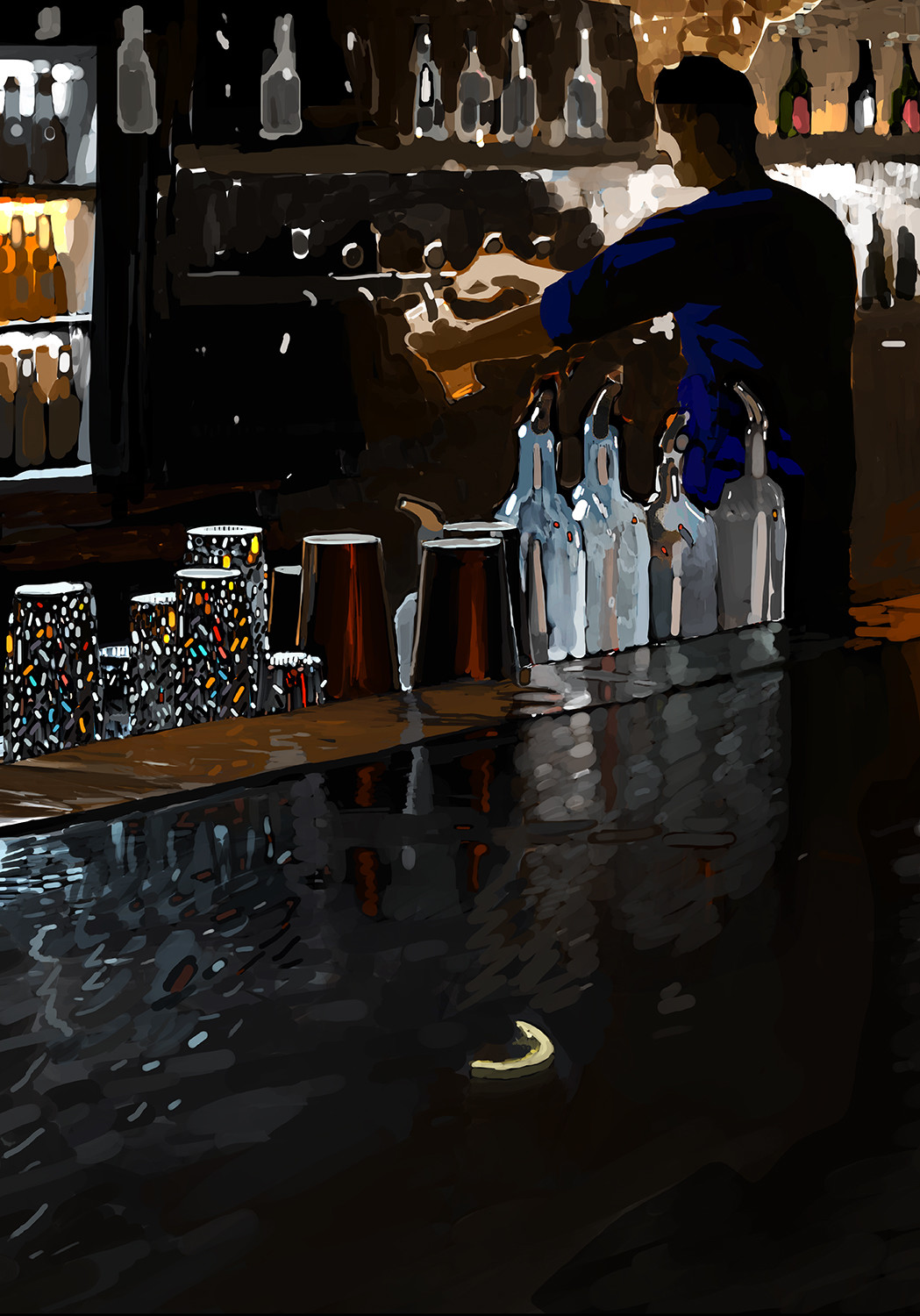Each of us at least once, but was in a small bar or a nightclub, where deafening music fills the whole space, and flashes of light tear this or that dance group out of darkness. In this bacchanalia of rhythm, the bar is the only island of peace and order. The movements of the bartender behind the counter are honed, but not fussy.
The polished surface of the dark countertop reflects crystal-like glare, transparent bottles with strong alcohol, multi-colored glass goblets and cold glare.
In the depths of amber, the beer in the glass glistens, rhyming with the honey tint of the glass in the bartender’s hand. His figure is a black silhouette, emphasized by energetic strokes of dark blue color.
Behind the bartender at the top of the picture is a rhythmic composition of transparent bottles, highlighted in white on a black background and black on warm ocher. Chorus she sounds in the second row of shelves with a contrast of black and white.
There are a lot of rhythms in the work. This is the rhythm of the white bottom of the glasses, which looks like beans of notes on a stave, a sonorous chord of bottles on the counter, uneven beats of black and white on the far shelves and a short staccato from the tap in barrels and rain from the timpani in sparkles, studded with glasses on the right.
The composition is based on a combination of diagonals and verticals. Color accents make the eye move to the beat, go away and come back. The author holds the viewer inside the picture using rhymes of form and color. The deep dark amber in the glass goblets on the counter is repeated in the almost red color of the inscriptions on the bottles in the upper right corner.
Honey shades of beer in the refrigerator through transparent crystal mugs turn into dark ocher on the lid of the bar counter.
You can endlessly browse and find these rhymes and rhythms, immersed in a picture filled with sound and moisture.
But Andrei Surnov would not have been a storyteller if he had not depicted the exact speaking detail in his work. She is like the last note completing a complex composition. When the polyphonic play has already been played, there is a pause, and then a lone sound hangs in the air, leaving us in anticipation of a future continuation, which we will have to invent ourselves.
This last note, the completion of the whole picture, was left on the counter with the lemon zest – an intimate and very humane detail that tells us more about the visitors to the club than the most detailed descriptions or photographs.
